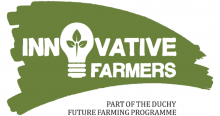An on-farm trial is a practical research method taking place in real life conditions and where the farmer’s needs and perspectives are at the heart of the process; different actors bring their know-how, resources and perspectives to explore a specific challenge and find solutions. Here are 10 tips to make the most of them!
1. Focus on real farm priorities
If you explore a challenge that you trial participants need solve, they are more likely to stay engaged for the duration of the trial… and remember, these can last months or even years! Remember: interesting topics that are not always a priority! Having said that, if you can find something that's interesting and a priority, that's a win-win situation.
2. Before starting, research whether there are answers to your challenge are out there!
Sometimes the answers are already available: you just haven’t found them yet. Check online or talk to other actors -like neighbours, advisors or even researchers- before starting the process. Some useful online resources: Innovative Farmers, Farm PEP.
3. Focus on a simple idea… and a simple plan!
Don’t try to test too many ideas at the same time; and create a simple testing protocol. Once you get started, life often gets in the way, with stressful times and condition changes. If your trial is hard or confusing to implement, you might end up with the wrong data or, worse, without a trial! A well communicated, clear plan on what the trial will be, what data needs to be collated and potential challenges makes it easier for participants to follow through.
4. Engage a variety of partners
Use your networks to bring the right team to explore your challenge: neighbours, advisors, and expert networks -like Innovative Farmers, ADAS, AHDB, Universities- are potential sources to find practical interested partners with the knowledge, resources and perspectives to find solutions to complex problems. This group will be your trials’ “software”, where ideas, knowledge, networks and communication reside. There are useful tools to explore your networks like i2connect’s Network Analysis and Eco-Analysis.
5. Make sure you have the right “hardware”
You will also need the right hardware to test your solutions and measure the resulting data! It could be having the right field, machinery, tools to assess data, or the right person at the right time. If you cannot access these, you might be uncapable to test your idea effectively.
6. Test for conditions variation before you start
The structural conditions of the spaces you will be working should be assessed before starting. If not identified, the underlying differences can lead to wrong conclusions; for example, if soil conditions or nutrient concentrations are different in a field for example. There are some useful tools you can use to check, like Google Earth or NDVI measurement.
7. Make sure you can -and do- replicate the trial
Ideally across fields with different conditions and across years. We can only learn so much from one season, and if something's worth doing, it's worth doing across several years.
8. Know, respect and plan for pinch times
During the agricultural seasons there are times when work is hectic and participants -especially farmers! - are unlikely to have time to dedicate to the trial; for example, when animals are being born or when sowing or harvesting are taking place. Plan beforehand for these times by having a clear plan and instructions; and support participants in the least intrusive ways during these times using their preferred communication systems- pro tip: know your participants preferred ways communicating really helps! (Emails? Text messages? A call?). Once the high season ends, you can come together to gather and analyse data.
9. Have designated “process facilitator” to keeps things going.
Someone needs to be responsible for keeping the process going, making sure the necessary information is shared at the right time, sending reminders for actions t key times, consolidating data, sharing information, creating spaces to connect, and maintaining the group going when energy fades. A good facilitator gives participants space while also ensuring things keep moving. They also keep communicating through the process to maintain engagement and bring participants together when the time is right.
10. Communicate the good and the bad!
Once you've gone through the whole process, turn it into practical advice and communicate its results within the group and across your participants’ networks. Even if you “failed”, share it! There is a lot to be learnt from when things don’t go as planned… You’ll get feedback from a variety of perspectives to potentially improve your next round and/or you never know when the next trial is around the corner just because you mentioned it to someone that was interested!
Celebrate together
Last but not least, celebrate together! Once the trial is over, bring participants together to share the results, but also strengthen the relations you have built and celebrate your hard work. Closing the process officially is an excellent place to plan the next iteration!
Want to learn more? Explore ADAS' "Five principles for success" guide;
Or watch this webinar where we explore the FarmPEP on-farm trial process and results!



